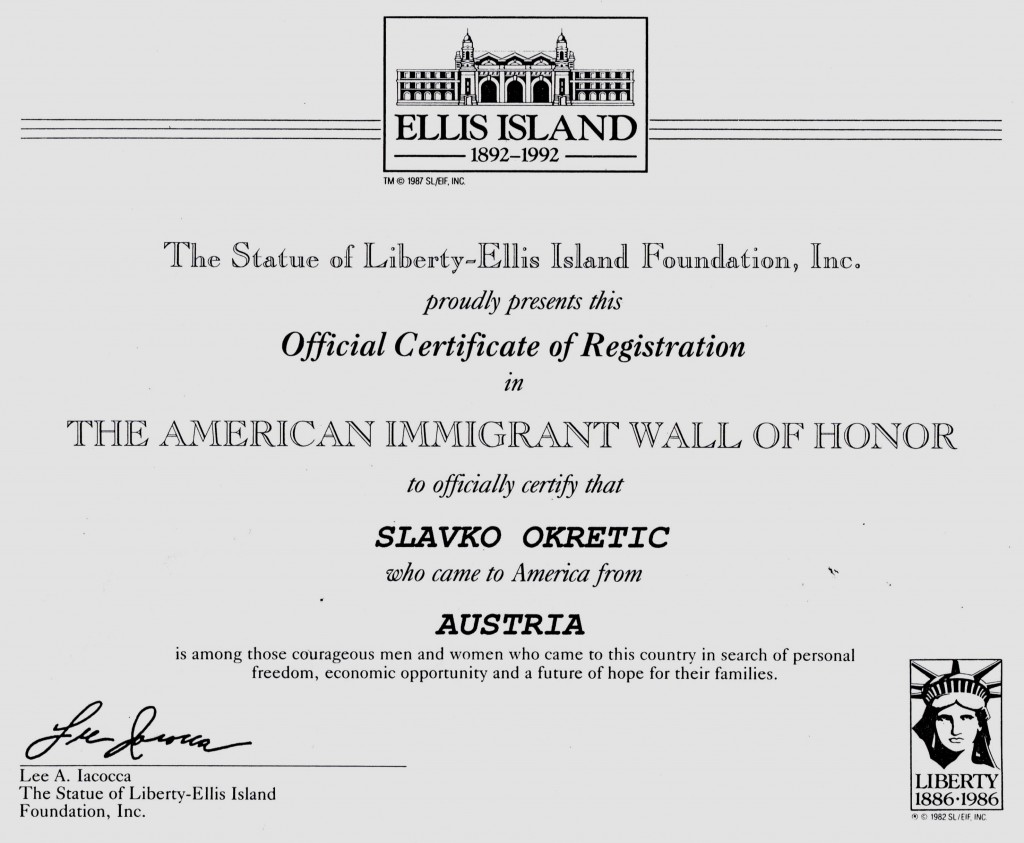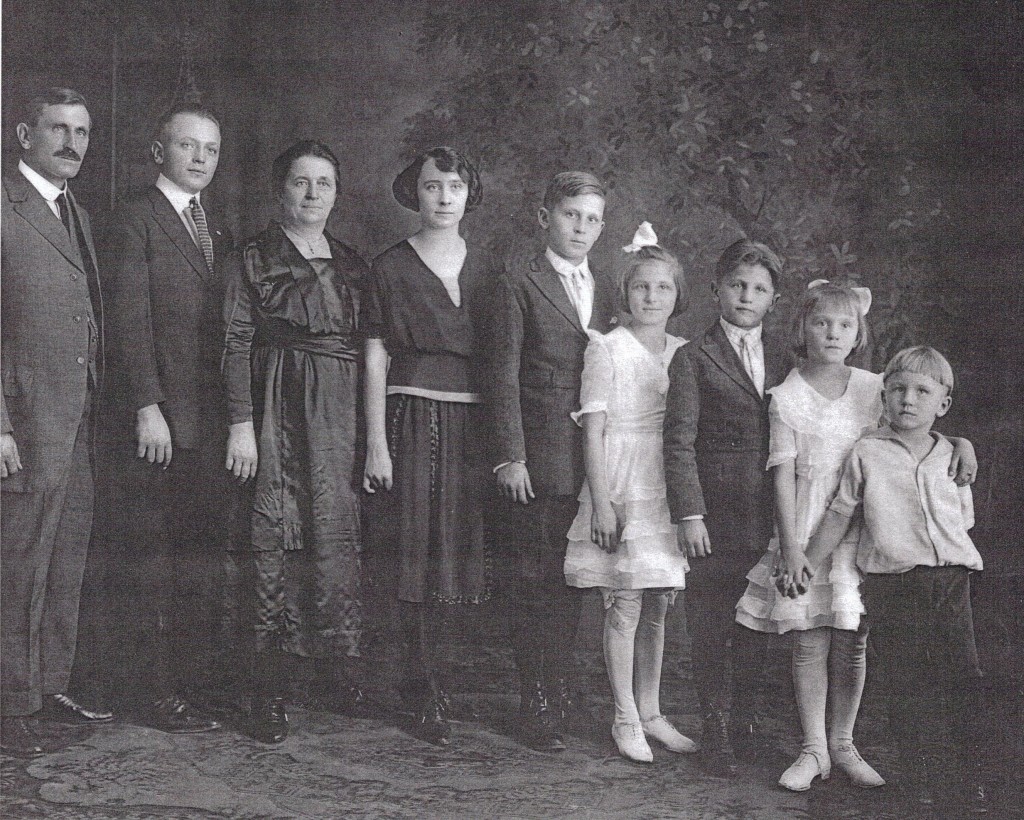
Lewis Hine caption: Newsboy. Little Fattie. Less than 40 inches high, 6 years old. Been at it one year. May 9th, 1910. Location: St. Louis, Missouri.
“Some of the youngsters photographed by Lewis Hine had been selling newspapers on street corners since they were six or seven years old. These ‘newsies’ received no salary or commission. They paid cash for each armload of newspapers, and took a loss for any papers they couldn’t sell. Groups of newsies gathered at newspaper offices in the middle of the night, waiting for early-morning editions to roll off the presses. Then each of them staked out a territory that was forbidden to others.”
“People liked to think of them as enterprising youngsters starting out on the road to success. Like the heroes of so many popular dime novels of the time, kids could work their way from rags to riches. It was true that some successful men started out as newsboys. But many others who began that same way found themselves at a dead end. They faced a bleak future, their prospects dimmed by their lack of education and skills.” –Kids At Work, Russell Freedman, Clarion Books (1994)
In May of 1910, Lewis Hine took at least 80 photos of “newsies,” at work on the streets of St. Louis, Missouri. Many show them smoking or hanging around pool halls, looking like the Dead End Kids of movie fame. Realistic as they are, these photos might not evoke much sympathy. After all, the kids look like the kind we would cross the street to avoid. But what are we to think of Little Fattie, cute, smiling and utterly lovable? Hine was a clever man. He knew that once we stopped staring at the boy’s face, we would notice the caption, provoking us to ask, “What’s this kid doing out there on the street at that age? There ought to be a law.”
Little Fattie had a real name, but it wasn’t easy finding it, until I contacted the St. Louis Post-Dispatch in December of 2007. At my request, reporter Matthew Hathaway wrote an article about my search and published the photo. Several weeks later I received an email, which said in part:
“I am writing on behalf of my mother, Phyllis Foerstel. My great aunt has had that picture in her home since it appeared in the Post-Dispatch in 1974. She told us that the boy in the picture was her brother, George Okertich. He was a paperboy during that period. He became a mail carrier and was known as the ‘singing mailman.'”
My subsequent interview of Mrs. Foerstel, George’s niece, appears below. But here is some of what I found in the census and other official records.
George (officially Slavko Ocretic) was born in Croatia (Yugoslavia) on April 22, 1905, which means that he was actually only five years old when he was photographed by Hine. His father, known in this country as August Okertich, came to the US in 1905, and settled in St. Louis. In 1906, his wife, Angela Borcic, who he married in 1903, joined him, along with George and his older sister Emma. In 1910, they had two more children, and August was working as a “laborer.” In 1920, they lived at 2755 La Salle Street, and had four additional children. Emma, now 15, was a stenographer and George an errand boy.
In the 1930 census, they are listed as owning their home, at 1729 Ohio Avenue. It was valued at $4,000, and, in a curious item that appeared only in this census, they owned a radio. August was working for the city street department, and George, still living at home, was a mail carrier. Nine years later, George married Mary Philibert. They were to divorce and have no children. George passed away on September 24, 1958, at the age of 53.
Edited interview with Phyllis Foerstel (PF), niece of George Okertich. Conducted by Joe Manning (JM), on May 7, 2008. Transcribed by Jessica Sleevi and edited by Manning.
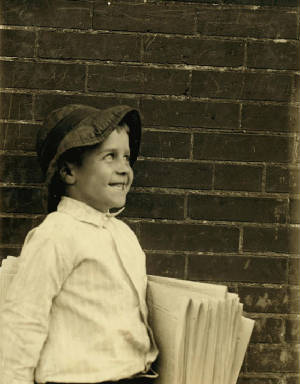
JM: You told me that you’ve seen this picture before.
PF: It came out in the St. Louis Post-Dispatch on October 27, 1974. My aunt said to me, “That’s your uncle Socko.”
JM: Once the picture had been in the paper and you identified it, was there any follow-up?
PF: I don’t recall if they said anymore about it. I kept it and framed it. When I saw the picture again and read the article about you in the Post-Dispatch, I had my daughter email you.
JM: How are you related to George?
PF: His sister Mary is my mother. He was also my godfather.
JM: What did he do for a living when he grew up?
PF: George was 15 when he went to work. He was a mail carrier. He was called the Singing Mailman. He loved to sing. He had a nice voice.
JM: Do you mean he sang on the job?
PF: Oh, yeah. He sang everywhere. When his mother died, he sat in the funeral parlor and sang for all of us. I remember once that my grandmother sent me to the corner tavern to get him, and he sat me up on top of the bar, and I had to sing with him.
JM: You sent me a copy of an official certificate of registration from Ellis Island, and his name is Slavko Okretic, and he was from Austria.
PF: He was actually Croatian. His real name was Slavko, but he was called Socko. Grandma spoke broken English, and when she would call for Slavko, the children that he was playing with would think she was calling him Socko.
JM: How did he get the name George?
PF: I don’t know.
JM: You sent me a copy of his employment certificate.
PF: I think it allowed him to go work at the age of 15.
JM: You also sent me his death certificate. He died at the age of 53. He died of diabetes and arterial sclerosis.
PF: All I know is that he had diabetes and lost a leg. And then later he lost the second one.
JM: Did he work as a mail carrier all his life?
PF: As far as I know, he did. But he and his younger brother Henry owned a tavern at one time (identified by St. Louis Post-Dispatch as Socko’s Tavern). On Saturdays, when I was old enough, I would take the bus there and wash dishes at the tavern. My grandmother was the cook there. I don’t recall see Uncle George there very much.
JM: Did he get married?
PF: On the death certificate, it says he did get married. I don’t think it lasted very long. I believe my cousin told me it lasted maybe a month or two at the very most.
JM: In those days, it was very common for boys to be selling newspapers on the street. It’s different from kids who deliver newspapers today. They would be on the street late at night. They had to pay for the papers first, and then they would have to sell them to make their money back. He’s one of the youngest newsboys ever photographed by Lewis Hine. According to the records, he was five years old when his picture was taken. People looking at the picture would probably think he was working at that age because his family didn’t have enough money. Do you think that would have been the case?
PF: That would have been true.
JM: What did his father do for a living?
PF: I don’t know. I remember that Grandpa had an arbor where he grew grapes, and he would make his own wine in the basement. One Easter, we all went down to see Grandpa, and we got a sip of wine, and each of us gave him a piece of the candy that we had gotten at Easter.
JM: Where did they live then?
PF: The house was at 1729 Ohio Street.
JM: Is that street still there?
PF: No, the highway is there instead. I just loved that house. I lived there when my father died. My mother and I and my brother moved back there. Both Uncle Socko and Uncle Henry shared one bedroom, my uncle Gus had the small bedroom, Mom and I and my brother shared another bedroom, and Grandma had the nice big bedroom to herself.
JM: Was that a single house?
PF: Yes. It was a brick home.
JM: So George’s family would have been a lot better off than when George was a little boy. Do you have any idea where the family lived when George was a little boy?
PF: My aunt said something about Sydney Street. I think they had an outhouse.
JM: Lewis Hine took hundreds of pictures in St. Louis. He thought we should have laws that keep children from having to work. What do you think about that? Do you think it was okay for him to be a newsboy at that age?
PF: Definitely not.
JM: The history of the newsboys in St. Louis is very interesting. A great number of them were taken care of by a priest who started a home for newsboys. Hine said that a lot of them tended to associate with the wrong people and they were taken advantage of. He also said that a lot of them were sort of left to their own devices and got into trouble in pool halls and things like that, and the parents weren’t too careful about when they came home.
PF: I don’t think that was the case here. I think they needed the money, but Grandma took good care of her children.
JM: What was George like?
PF: He was lots of fun. Everybody loved him. He was always very jovial. I never saw him unhappy. Somebody would say something to him, and he’d start singing. It just made you feel good.
JM: It’s funny that you say that he was always smiling. In the picture, he’s carrying a huge bundle of newspapers, but he looks happy.
PF: When he was older, he was very heavy, but he still always had a smile.

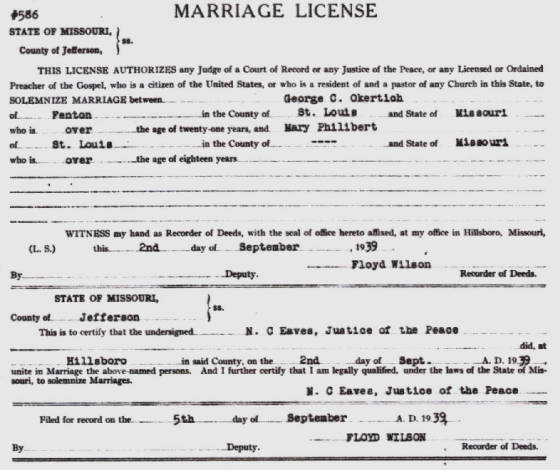
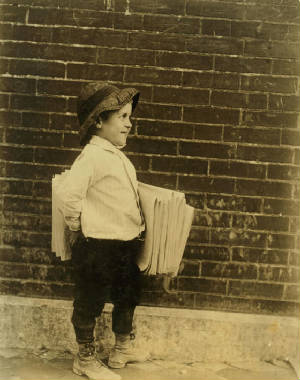
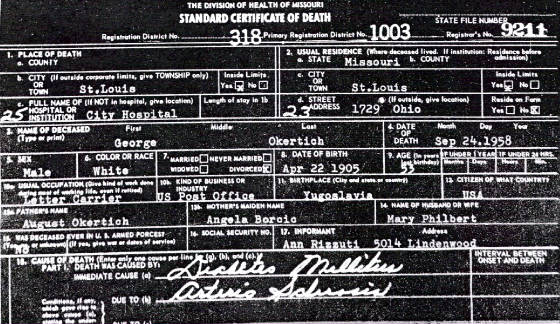
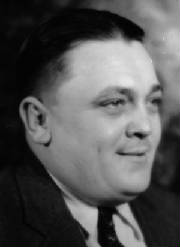

George Okertich: 1905 – 1958
*Story published in 2010
